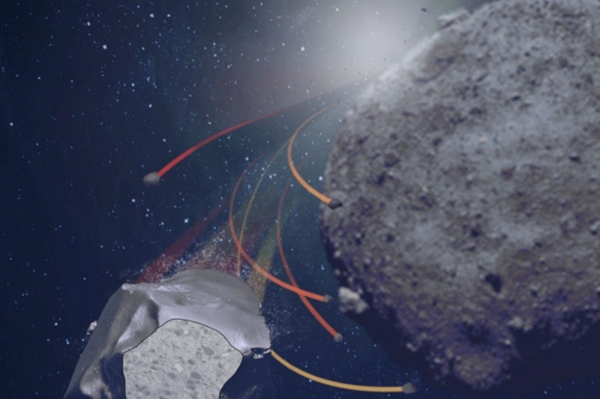In 2019, NASA’s OSIRIS-REx spacecraft sent back images of a geological phenomenon no one had ever seen before: pebbles were flying off the surface of the asteroid Bennu. The asteroid appeared to be shooting off swarms of marble-sized rocks, and it’s a mystery exactly why it happens. But in a new paper in Nature Astronomy, researchers show the first evidence of this process in a meteorite.
“It’s fascinating to see something that was just discovered by a space mission on an asteroid millions of miles away from Earth, and find a record from the same geological process in the museum’s meteorite collection,” says Philipp Heck, the Robert A. Pritzker Curator of Meteoritics at Chicago’s Field Museum and the senior author of the Nature Astronomy study.
Meteorites are pieces of rock that fall to Earth from outer space; they can be made of pieces of moons and planets, but most often, they're broken-off bits of asteroids. The Aguas Zarcas meteorite is named after the Costa Rican town where it fell in 2019; it came to the Field Museum as a donation from Terry and Gail Boudreaux. Heck and his student, Xin Yang, were preparing the meteorite for another study when they noticed something strange.
Read more at Field Museum
Image: Artistic depiction of pebble mixing process from the Aguas Zarcas parent body. Pebble-sized fragments get ejected and redeposited on the asteroid surface. Illustration credit: April I. Neander. Asteroid image: NASA/Goddard/University of Arizona.


